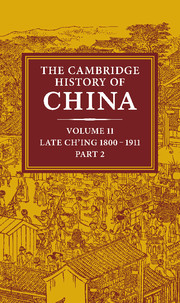Crossref Citations
This Book has been
cited by the following publications. This list is generated based on data provided by Crossref.
Hsü, Elisabeth
1992.
Science and Empires.
Vol. 136,
Issue. ,
p.
89.
Feng, Yi
and
Li, Jieli
1997.
Domestic constraints and international competitiveness: A research note on the China case.
Journal of Contemporary China,
Vol. 6,
Issue. 15,
p.
377.
Xiao-Planes, Xiaohong
2000.
La construction du politique dans la Chine du début du XXe siècle. L'action des élites locales du Jiangsu.
Annales. Histoire, Sciences Sociales,
Vol. 55,
Issue. 6,
p.
1201.
Tong, Q. S.
2000.
Inventing China: The Use of Orientalist Views on the Chinese Language.
Interventions,
Vol. 2,
Issue. 1,
p.
6.
2003.
English Lessons.
p.
123.
2003.
English Lessons.
p.
49.
2003.
English Lessons.
p.
1.
2003.
English Lessons.
p.
195.
2003.
English Lessons.
p.
31.
2003.
English Lessons.
p.
315.
2003.
English Lessons.
p.
156.
2003.
English Lessons.
p.
74.
2003.
English Lessons.
p.
351.
2003.
English Lessons.
p.
282.
2003.
English Lessons.
p.
241.
Karayalçin, Cem
2008.
DIVIDED WE STAND, UNITED WE FALL: THE HUME‐NORTH‐JONES MECHANISM FOR THE RISE OF EUROPE*.
International Economic Review,
Vol. 49,
Issue. 3,
p.
973.
Wang, Hsien-chun
2013.
Revisiting the Niuzhuang Oil Mill (1868–1870): Transferring Western Technology into China.
Enterprise and Society,
Vol. 14,
Issue. 4,
p.
749.
Hua, Shiping
2013.
Shen Jiaben and the Late Qing Legal Reform (1901–1911).
East Asia,
Vol. 30,
Issue. 2,
p.
121.
Misra, Maria
2014.
Sergeant-Major Gandhi: Indian Nationalism and Nonviolent “Martiality”.
The Journal of Asian Studies,
Vol. 73,
Issue. 3,
p.
689.
Nordin, Astrid H. M.
2015.
A reply to Xu Changfu’s ‘Why do we need practical wisdom?’.
Global Discourse,
Vol. 5,
Issue. 4,
p.
534.



